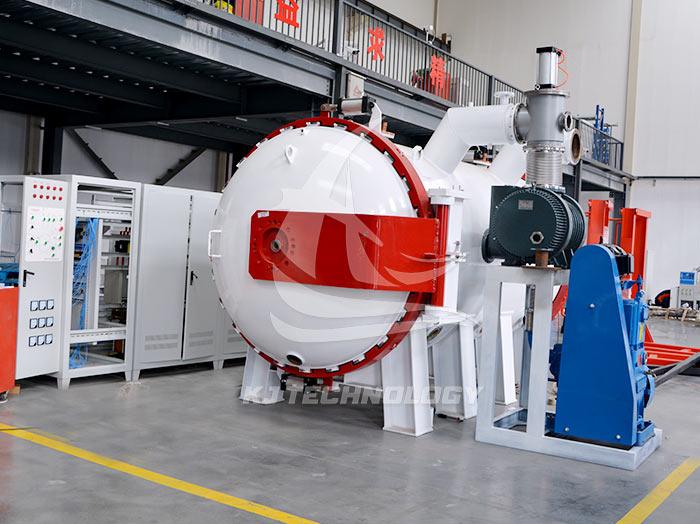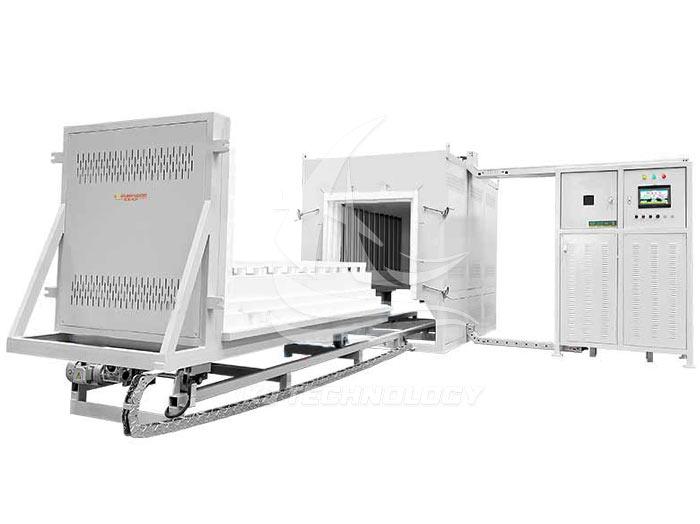Experimental small vacuum furnace
 10-21-2025 Author: KJ technology
10-21-2025 Author: KJ technology
A small experimental vacuum furnace is a device used for high-temperature treatment in an anaerobic or depressurized state, with high vacuum degree, high temperature control accuracy, and flexible atmosphere control capability. Its core features and application scenarios are as follows:
1. Core Features
High vacuum degree
By combining a mechanical pump with a molecular pump for air extraction, a maximum vacuum degree of 6.67 × 10- ³ Pa can be achieved (such as in laboratory specific vacuum hot pressing furnaces), or a vacuum degree of 10 mtorr can be achieved within 30 minutes when using a dual rotor mechanical pump (such as in a small high vacuum furnace at 1100 ℃). This environment can effectively isolate oxygen and prevent material oxidation or pollution.
High temperature control accuracy
Adopting a digital intelligent temperature control system, the temperature range covers 1000 ℃ -3000 ℃, and the temperature measurement accuracy reaches 0.2% -0.7% (such as far-infrared optical temperature measurement). Some models have a temperature control accuracy of ± 1 ℃ and a temperature uniformity of ± 10 ℃ to ensure experimental repeatability.
Flexible atmosphere control
Support the introduction of inert gases (such as N ₂, Ar) or reducing gases (such as H ₂) to meet different experimental requirements. For example, Ar protection is introduced during annealing of semiconductor materials, or H ₂ is introduced in metal reduction experiments to remove oxides.
Rapid temperature rise and fall capability
Graphite or metal heating elements combined with efficient cooling systems can achieve rapid temperature rise and fall. For example, a small high vacuum furnace with a continuous operating temperature of 1100 ℃ and a maximum temperature of 1100 ℃ can meet the requirements of short-term high-temperature experiments.
2. Typical application scenarios
Heat treatment of metal materials
Vacuum quenching and tempering: Materials such as high-speed steel and mold steel are quenched under vacuum to avoid surface oxidation and improve hardness and wear resistance.
Vacuum annealing: Stainless steel bearings, cutting tools and other parts are annealed under vacuum to eliminate internal stress and maintain surface brightness.
Vacuum carburizing: carburizing treatment is carried out on high alloy steels such as 12Cr2Ni4A to improve surface hardness and fatigue strength.
Preparation of Semiconductor Materials
Vacuum annealing: Annealing silicon wafers in an N ₂ atmosphere to repair lattice defects and improve carrier mobility.
Chemical Vapor Deposition (CVD): SiH ₄ and NH ₄ are introduced to deposit silicon nitride (Si ₄ N ₄) thin films under vacuum for semiconductor device packaging.
Sintering of ceramics and composite materials
Vacuum sintering: High density ceramics are prepared by sintering refractory metal powders such as tungsten and molybdenum using medium frequency induction heating under H ₂ protection after vacuum pumping.
Hot pressing sintering: Combining pressure and vacuum environment to prepare high-performance ceramic composite materials such as silicon carbide (SiC) and silicon nitride (Si3N4).
High temperature treatment of biomaterials
Biomass pyrolysis: Pyrolysis of biomass (such as rice husks and sawdust) at 800 ℃ under N ₂ atmosphere to study its gasification characteristics and product distribution.
Bioceramic sintering: Preparation of bioactive ceramics such as hydroxyapatite (HA) for use as bone repair materials.
3. Structural and functional design
Furnace structure
Horizontal/vertical design: The horizontal structure is convenient for loading and unloading materials and has a fast heating rate; The vertical structure is suitable for long strip samples (such as semiconductor wafers).
Multi layer insulation screen: using materials such as graphite felt and graphite cylinder to reduce heat loss and improve energy efficiency.
heating system
Resistance heating: Use Ni Cr Al resistance wire or high-strength graphite heating element, with temperature uniformity of ± 5 ℃ (such as a small high vacuum furnace at 1100 ℃).
Induction heating: suitable for rapid heating of refractory metals such as tungsten and molybdenum, with higher efficiency.
vacuum system
Mechanical pump+molecular pump: Quickly evacuate to high vacuum degree to meet the requirements of precision experiments.
Gas path control: supports multiple gas inputs, with a flow accuracy of ± 1% F.S., and can achieve precise control of atmosphere ratio.
control system
Digital intelligent program control: pre-set heating, insulation, and cooling curves, automatically completing the heat treatment process.
Security protection: equipped with water circuit pressure loss and overcurrent alarm functions to prevent equipment damage.








